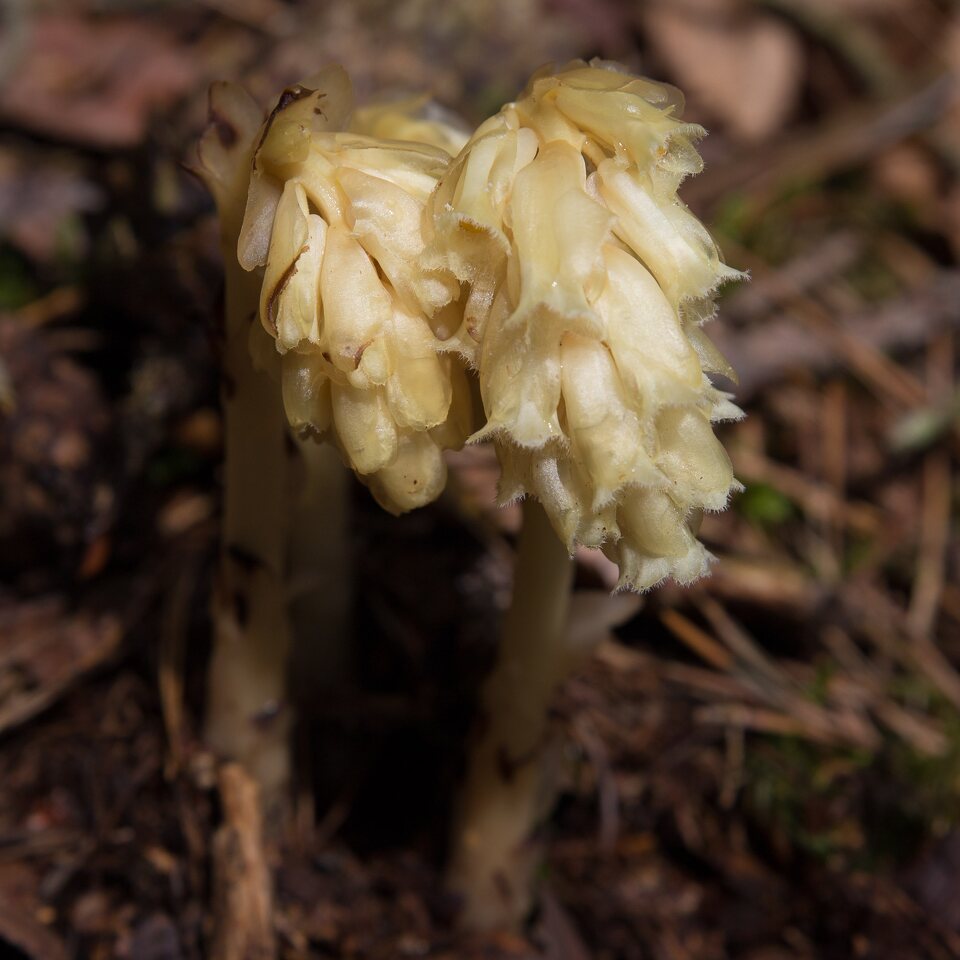
Monotropa hypopitys · miškinė gluosvė
- Hypopitys monotropa
- Dutchman's pipe, false beech-drops, pinesap, yellow bird's-nest
- Fichtenspargel
- miškinė gluosvė
- parastā lāčtauce
- korzeniówka pospolita
https://en.wikipedia.org/wiki/Monotropa_hypopitys It is a herbaceous perennial plant, formerly classified in the families Monotropaceae or Pyrolaceae, but now included within the subfamily Monotropoideae of the family Ericaceae. It is native to temperate regions of the Northern Hemisphere, and is scarce or rare in many areas. However, it is still the most widespread member of the subfamily. While currently included in the genus Monotropa, recent genetic evidence strongly suggests that Monotropa hypopitys should be placed in its own genus, Hypopitys, with the single species Hypopitys monotropa Crantz, but possibly containing several other species.
Unlike most plants, it does not contain chlorophyll; it is a myco-heterotroph, getting its food through parasitism upon fungi rather than photosynthesis. These fungi form a mycorrhiza with nearby tree species.
Plants are fleshy and grow 10–35 cm tall. True stems are nonexistent. Instead, the only part which emerges from the soil are unbranched, adventitious inflorescences developmentally similar to adventitious roots. All parts of the plant are pale yellowish white to reddish-tinged. The bracts are 5–10 mm long scale-like structures, which cover most of the inflorescence. The flowers are pendulous when young, but become erect when they begin to mature into the fruit which is a capsule. The flowers are 9–12 mm long and produced in a cluster of 1–11 together at the apex of the inflorescence, which is a raceme. It flowers between early summer and mid autumn; plants that flower in summer are yellow and sparsely hairy, while those that flower in autumn are red and densely hairy. These two color "forms" overlap in flowering time. It has been suggested that yellow individuals are largely self-pollinating.
Augalas mėsingas, parazitinis, neturi chlorofilo. Jo stiebas 10-20 cm aukščio, apaugęs žvynais. Žiedai su trumpais koteliais, išauga pažiedžių pažastyse. Žydintys žiedai būna nulinkę, o vėliau statūs. Žydi birželio – liepos mėn. Auga drėgnuose spygliuočių ir lapuočių miškuose. Parazituoja grybus.‥